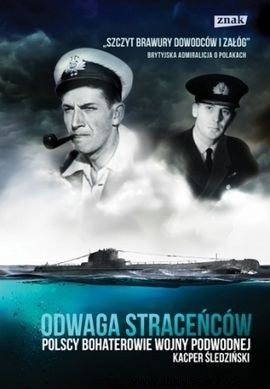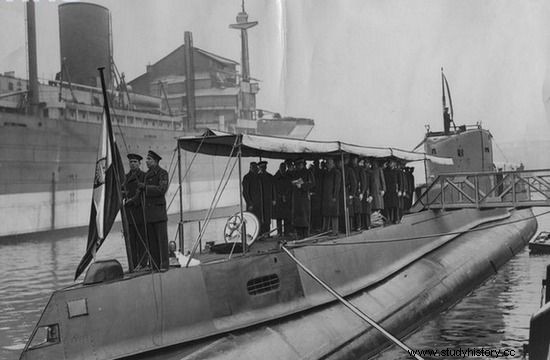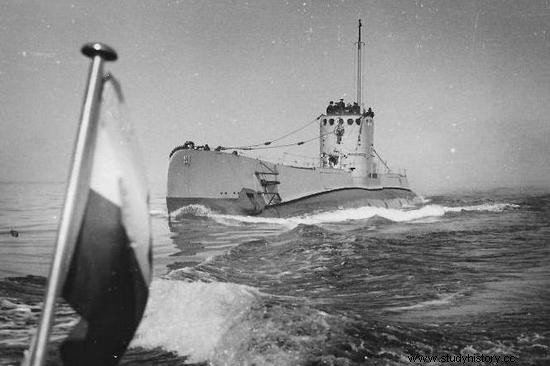ORP Sęp, next to its twin Eagle, was the greatest pride of the submarine fleet of the Second Polish Republic. But he didn't have to become one at all. The construction of the ship faced enormous obstacles, and our sailors had to ... "kidnap" Vulture to even incorporate him into the ranks of the Polish navy!
The second half of the 1930s was a time of rapid modernization for the Polish Navy. The order for two ocean-going submarines followed this trend. They were supposed to join the already established OORP Ryś, Wilk and Żbik.
It has long been debated who to entrust the construction of the key units of the Polish fleet. Considered, inter alia, French, American or British shipyards. Ultimately, the choice fell on the Dutch. Their offer turned out to be the most competitive:both financially and due to modern technical solutions. After fruitful negotiations, a very profitable contract was signed in January 1936.
German intrigues
Under the terms of the contract, the construction of the ship - later named ORP Sęp - was entrusted to the Rotterdam shipyard Droogdok Maatschappij. According to the assumed schedule, both ships - Sęp and twin Orzeł - should be ready at the turn of 1938 and 1939.

ORP Sęp at the Droogdok Maatschappij shipyard in Rotterdam. Initially, nothing foreshadowed the impending problems with completing the shipbuilding.
For a long time, everything was going according to plan. The deadlines seemed to be met. In August 1938, even Lieutenant Commander Władysław Salamon, who was appointed the unit commander, went to Rotterdam. There were strong grounds for optimism, as on October 17 the Sęp was officially launched. Now all you had to do was carry out the required sea trials, arm the ship, and that's it.

Everything would probably have gone smoothly had the German agents not been involved . Relations between Warsaw and Berlin grew increasingly tense every month. Poles did not want to accept Hitler's "generous" offer regarding Gdańsk and the extraterritorial highway.
In this situation, the Third Reich could not allow the condition of the Polish Navy to increase by another modern submarine. After all, it would pose a potential threat to the Kriegsmarine in the coming armed conflict. Therefore, as he explains in his new book, Courage of the Lost Ones. Polish heroes of the submarine war ”Kacper Śledziński:
In February 1939, the Droogdok Maatschappij shipyard in Rotterdam, where the ship was being built, unexpectedly slowed down the pace of work. The reasons were revealed in the Polish-Dutch talks. The Germans really wanted to stop or delay the work on the ship, and to a large extent they succeeded.
Reports about the worrying situation in Rotterdam reached Rear Admiral Świrski. In this case, there could only be one decision:to take the ship out of the shipyard as it is and to come to Poland with it .

After the launch in January 1939, the Dutch wanted to delay the commissioning of OPR Sęp at all costs. There was German intelligence behind everything.
"Kidnapping" Vulture
It's easier said than done. The opportunity arose only in April, when the ship was undergoing depth tests. The problem, however, was that almost the entire crew was made up of the Dutch, who reluctantly agreed that the Polish commander Salamon should take command of them.
In order not to arouse suspicions, the Poles did not undertake any extra-curricular activities until the end of the trials. However, as soon as it was made sure that everything was working properly, the initiative was taken over by Lieutenant Commander Edward Szystowski, responsible for the reception of the ship . He had received an unequivocal order to bring Vulture back to the country.
The Dutch, of course, did not agree to this, but Commander Szystowski was adamant. He even threatened to use a gun. Finally, after a stormy exchange of opinions, he got his way. The Dutch sailors left the ship on which the Polish flag hovered at 10.10 on April 16, 1939. It was possible to go to the country.
Wait a minute, should we not forget something? Where's the crew? Two officers and a few Polish sailors are not enough to deal with such a large vessel. Of course, this was thought ahead of time. ORP Burza was waiting nearby. At the agreed sign, the submarine approached the destroyer's side. The armaments were immediately transferred to Vulture and the crew was replenished. It lasted almost 12 hours, after 22.00 the ships set off towards Gdynia.
Unfortunately, at the height of Bornholm, Vulture ran out of fuel, so Burza had to haul him. Therefore, the ships reached their destination only after a 40-hour voyage. However, it was not the end of the vicissitudes, because as Kacper Śledziński writes:
On Tuesday, the Vulture entered the naval port with a bang . And it wasn't just another pump. Not at all. The fault was the so-called Czech mistake:instead of turning the left engine into reverse, it was given forward. The vulture ran over two minesweepers.

ORP Sęp in all its glory. It was necessary to resort to "kidnapping" in order for the ship to go to Poland.
Fortunately, it did not take much damage. It was mainly the ego of the sailors that suffered. Nevertheless, the finishing work took a long time, as we had to wait for the parts to be delivered by the Dutch.
Eventually, Sęp was fully operational only at the beginning of July. Unfortunately, the wrong assumptions of the command of our Navy meant that in September he did not have the opportunity to show what he could do. But that's a topic for a completely different article.
